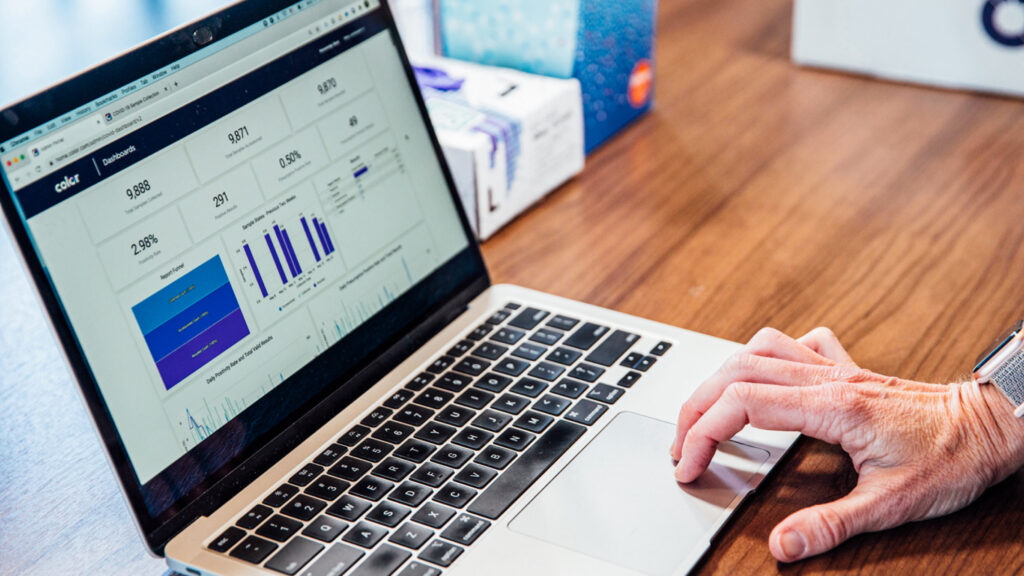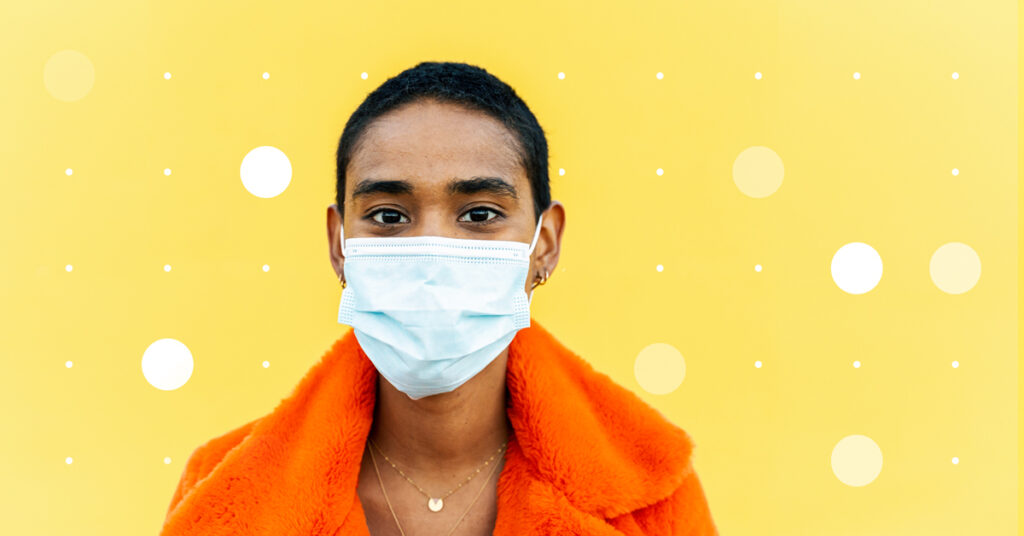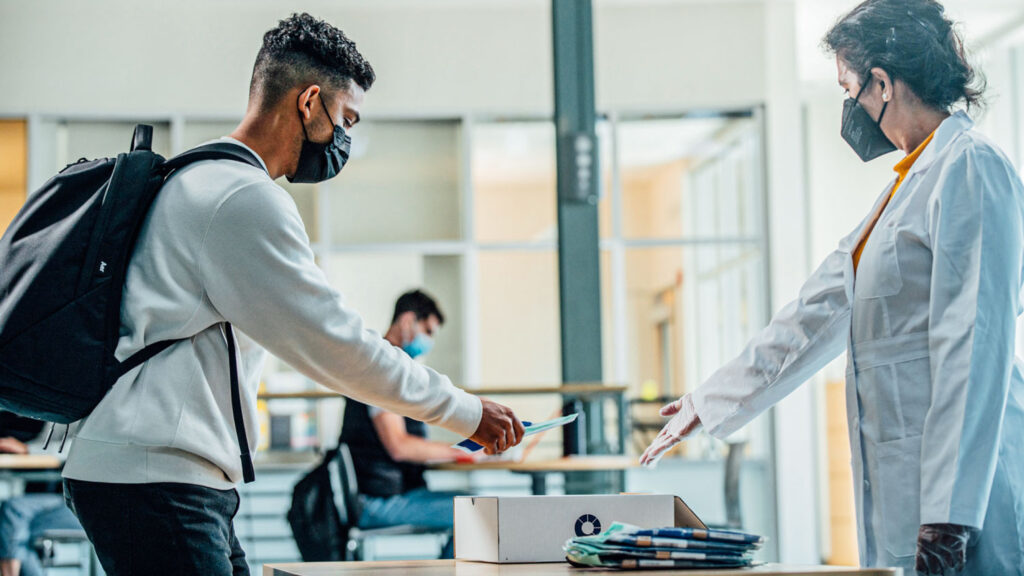News & Articles
New COVID-19 test data: Majority of people who test positive for COVID-19 have mild symptoms or are asymptomatic
Color
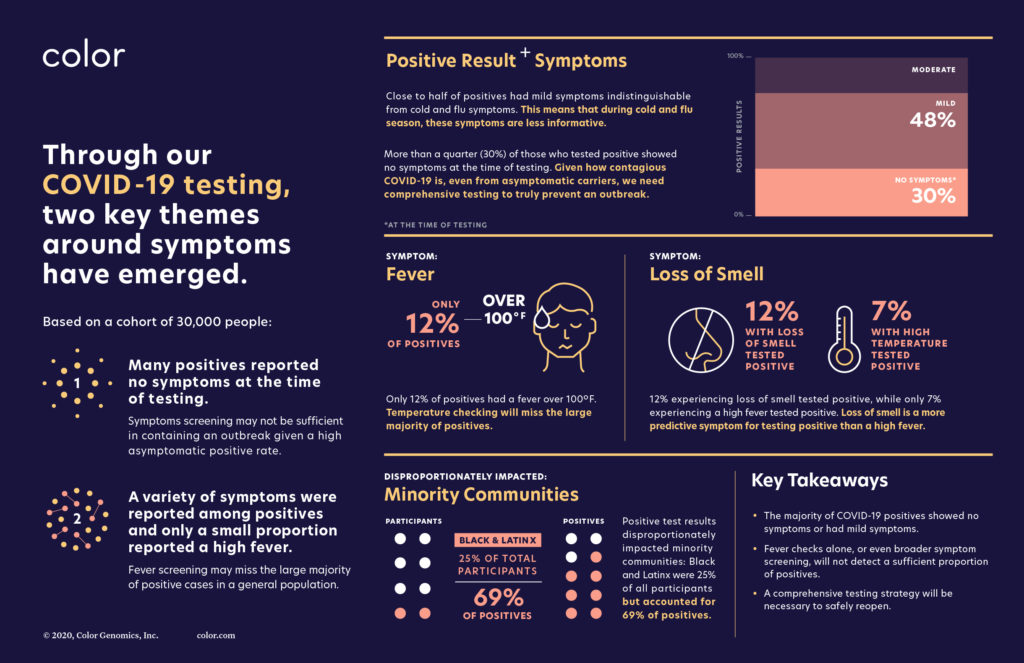
Today Color is releasing new data from its COVID-19 testing program that demonstrates the importance of widespread testing to reopen cities, universities, and businesses. Color has returned COVID-19 test results to more than 30,000 people, with 1.3% testing positive. The majority of people who tested positive had mild or no symptoms, and only a small percentage had a high fever.
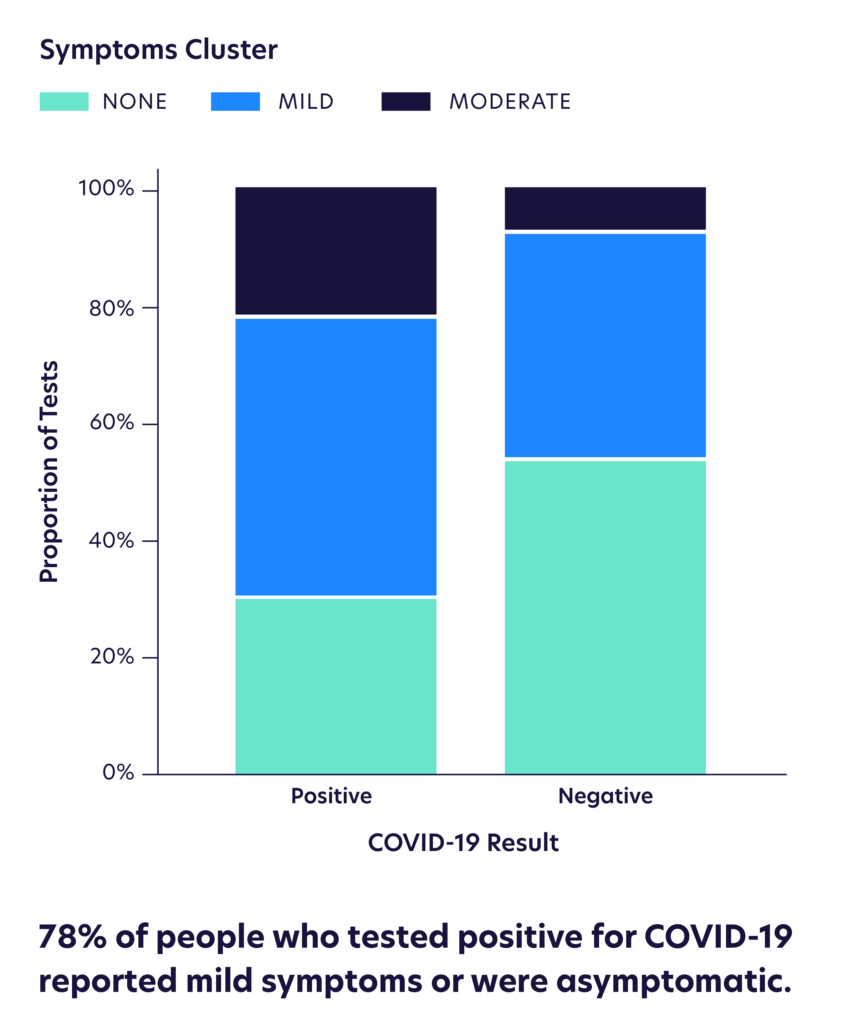
“Our data suggests that fever checks alone are not sufficient to safely reopen workplaces,” said Alicia Zhou, Chief Science Officer at Color. “What’s more, screening for symptoms in general won’t effectively detect positive cases. To truly prevent an outbreak, we need comprehensive testing.”
About 78% of people who tested positive for COVID-19 had mild symptoms (48%) or were asymptomatic (30%). These numbers further confirm estimates released by the World Health Organization that 80% of COVID-19 infections had no or mild symptoms. Preliminary data collected by Color also supports reports that patients with a higher viral load experienced more severe symptoms.
Color has collected more comprehensive data on infection rates among essential workers, who were prioritized early in the testing process. About 36% of essential workers who tested positive were asymptomatic, which suggests that the true asymptomatic rate for the overall population, if tested comprehensively, may be higher than 30% among positives.
“There is ample evidence that symptomatic testing strategies aren’t sufficient to prevent workplace exposure,” said Color CEO Othman Laraki. “Ensuring a safe working environment requires a return-to-work approach that includes active testing, regardless of symptoms.”
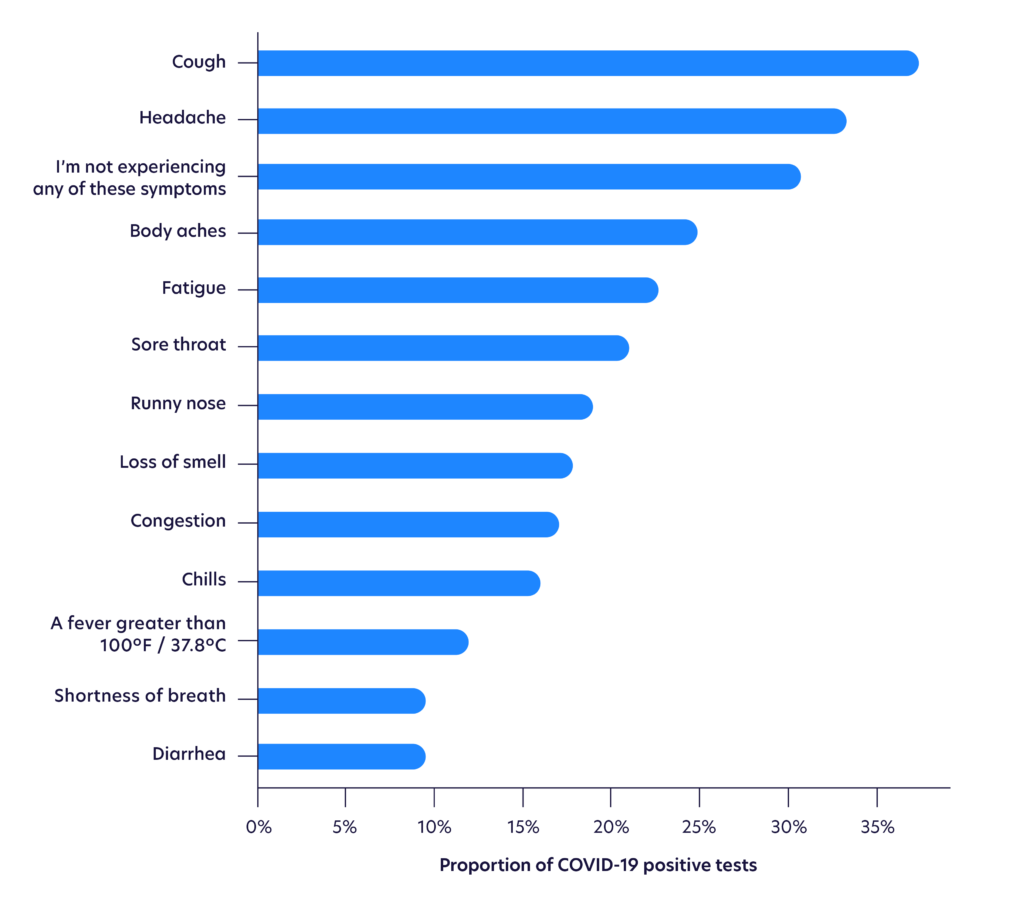
Just 12% of people who tested positive had a fever of 100 degrees Fahrenheit or higher, making it one of the least reported symptoms in positive cases, despite the emergence of temperature checks as part of reopening efforts. This suggests that temperature checks as a standalone screening measure may miss the large majority of cases in the workplace or general population.
The data released includes more detailed information about the prevalence of specific symptoms among people who tested positive including:
- 37% had a cough.
- 32% had a headache.
- 30% had none of these symptoms.
- 16% lost their sense of smell.
- 12% had a high fever.
While not as common as other symptoms, loss of smell was the most highly correlated with testing positive, as shown with odds ratios below, after adjusting for age and gender. Those with loss of smell were more likely to test positive for COVID-19 than those with a high fever. A similar finding was published in Nature based on symptoms data from a smartphone app.
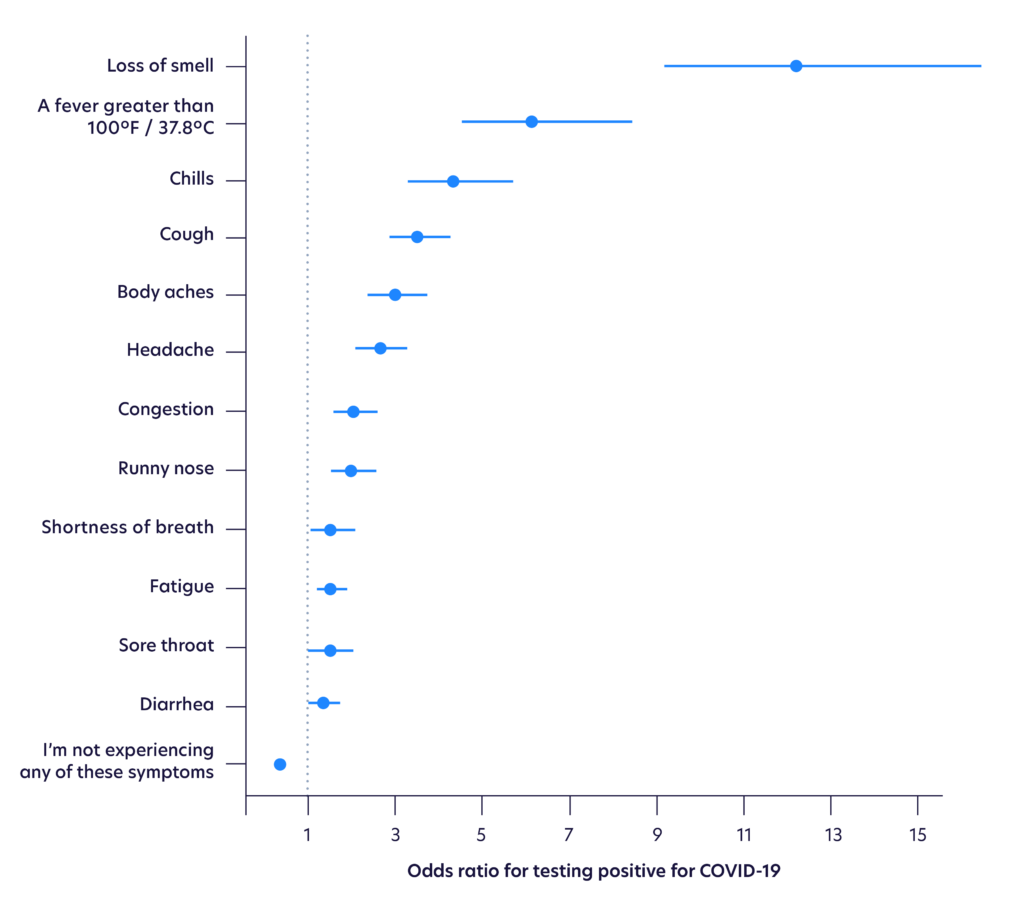
The data also revealed that the majority of people who tested positive are relatively young — between ages 18 – 40 (68%), and confirmed disparities in positive results based on ethnic background. The Latinx population represented 66% of positives, but made up only 20% of those tested. There were higher positive rates among Latinx (4.3%) and African-American (0.9%) ethnicities compared to White and Asian (0.4% and 0.6%, respectively).
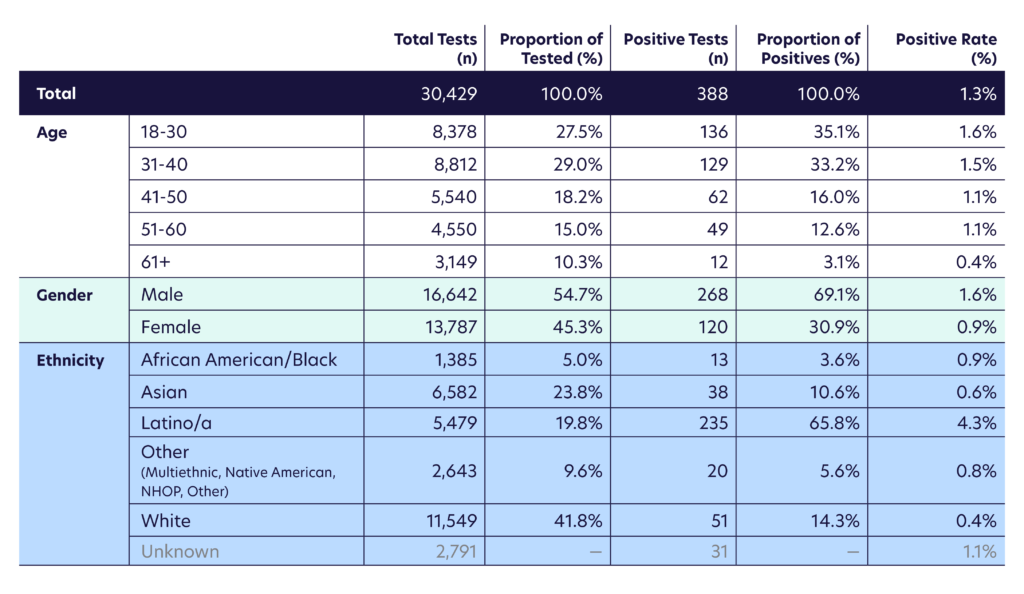
Read more about the analysis and methods behind these results here. To read more about return-to-work testing strategies, and for more information on Color’s COVID-19 response, visit https://www.color.com/covid.
About Color
Color is a leader in distributed healthcare and clinical testing. Color makes population-scale healthcare programs accessible, convenient, and cost-effective for everyone. Color works with health systems, employers, and national health initiatives around the world including the million-person All of Us Research Program by the National Institutes of Health. For more information about Color and its response to COVID-19, visit www.color.com.
